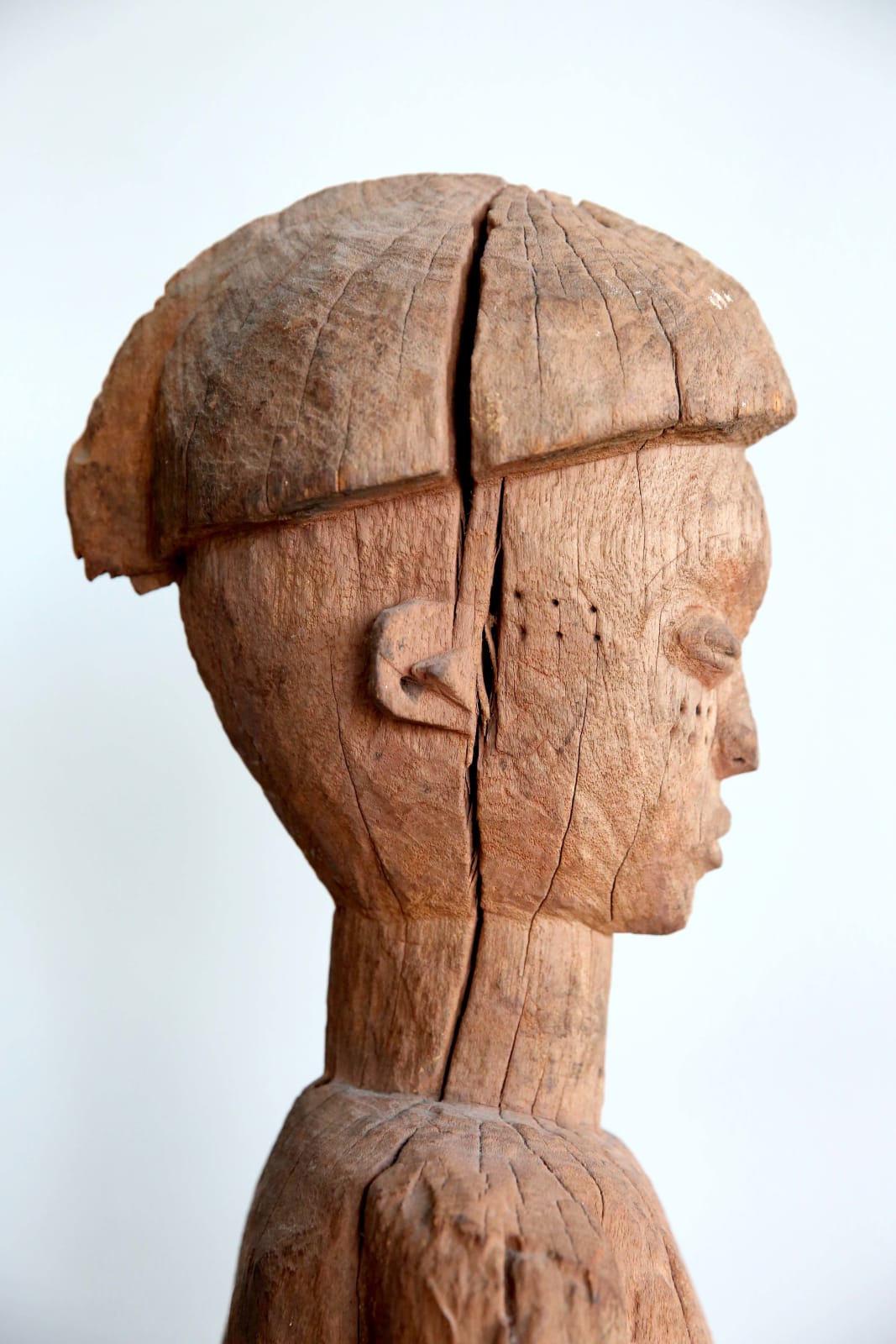Anonymous Pende artist
Early 20th century
Wood
height 24 3/4 in
Further images
The Pende people, numbering more than 500,000 today, have lived in southwestern Congo since the 17th century. They are a relatively decentralized, rural culture with numerous small chiefdoms. Decision-making in a village ideally derives from consensus among adult men, while a chief fulfills symbolic and religious roles, often serving as peacemaker and orator to keep the community united. Pende chiefs are responsible for mediating with the ancestors, whose care from beyond the grave is considered to be essential to the well-being of the chiefdom. To properly perform his role, a chief must have a special house where rituals are enacted. This female bust, once a full free-standing female statue, once graced the roof top of the chef’s abode among the Eastern Pende. The house’s central pole would support such a rooftop figure. The statue’s head is crowned by the typical helmet-like Pende coiffure. Pierced row of holes under her slit eyes and on the temples mirror local scarification traditions. The figure’s left hand was positioned on the torso, where remnants of the fingers tips still remain. The right lower arm must once have projected forward, holding an axe in the hand – as can be observed on other surviving Pende statues. The presence of such a weapon originally served as a warning to anyone of evil intent. Visible on the roof-top seen the size and elevated position, such a figure identified the hut as the chief’s abode. Known as kishikishi, the statue announced a chief’s sacred domain and his training in sorcery, skills enabling him to lead and protect his people. The figure’s purpose was to announce the presence of secret powers within the chief’s residence, while at the same time deterring any would-be malefactors from the sacred space. The axe-wielding female guarded the secrets of chiefly power contained with this structure, which also served as the chief’s residence. The statue represents a chief’s first wife, who had several ritual duties regarding agriculture, and was a political force (dancing with an axe at the chief’s investiture), as well as was a spiritual emblem of the Pende community. Position on the roof top, such figures were subject to the harsh climatic conditions. Originally painted red, rain and wind would erode the statue’s surface over the years. Additionally, this wooden figure has suffered major deterioration, likely caused once the chief’s abode collapsed after it became disused after his passing. It should be noted that the Pende deliberately avoid creating such statues out of permanent materials, such as stone or metal. There was not intention to make such powerful objects eternal, as each new chief had to commission his own figures, and people would be fearful to keep too many spirits around. The meditative gaze and eroded surface give this bust a timeless and universal appeal, while it continues to impress new onlookers.













